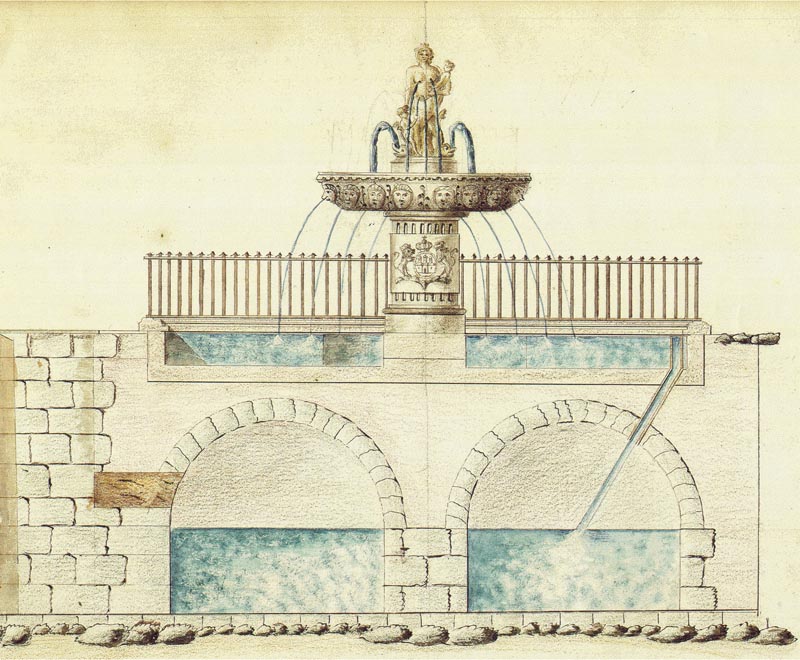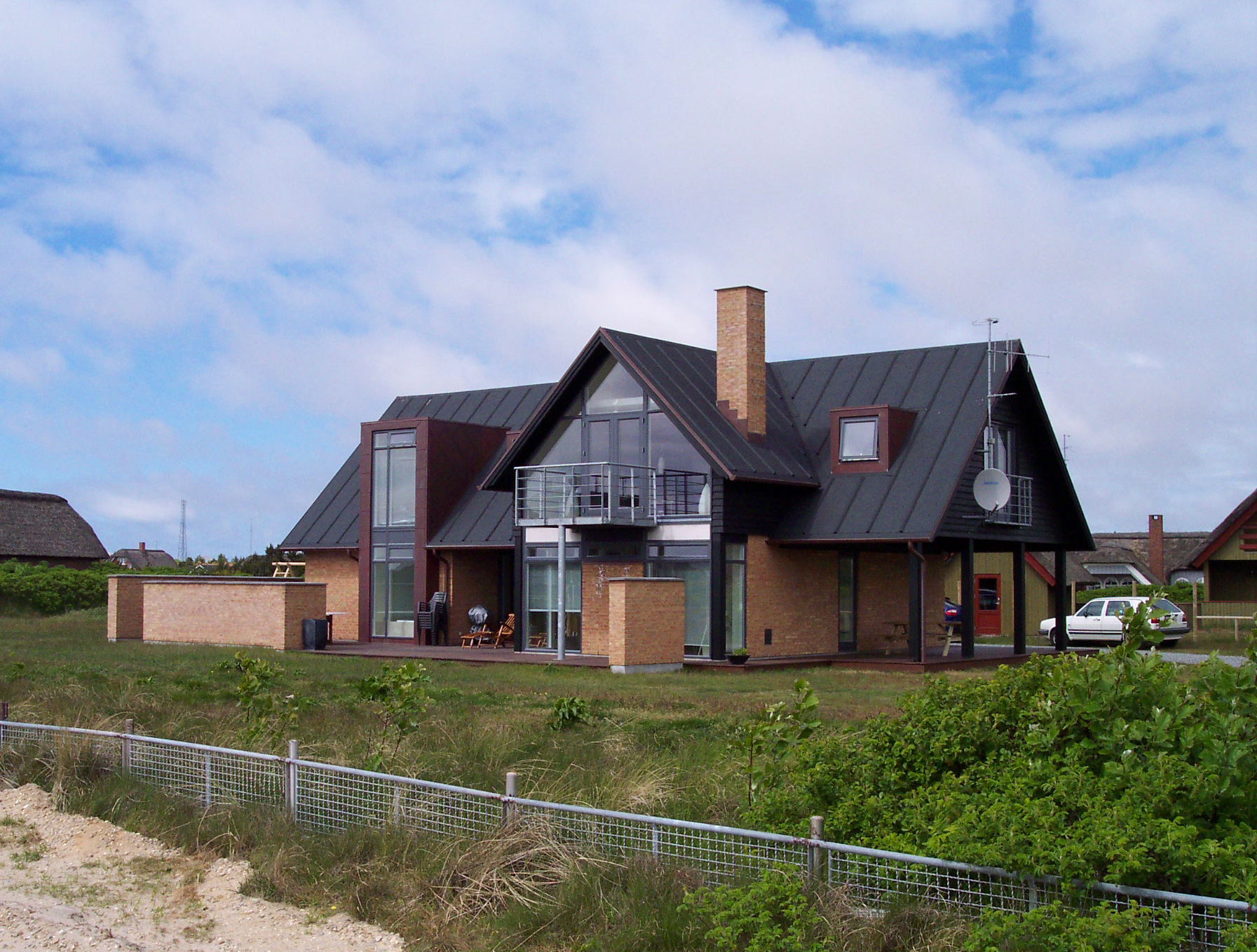|
Lake Emdrup
Lake Emdrup (Danish: Emdrup Sø) is a lake located on the border between Copenhagen and Gentofte municipalities in the Emdrup area of northern Copenhagen, Denmark. It is fed mainly with water from Utterslev Mose to the west and Gentofte Lake to the north and drains into St. Jørgen's Lake in central Copenhagen through a system of pipes. The small Emdrup Lake Park is situated at the southwestern corner of the lake. The lake and park were protected by the Conservation Authority in 1963. History The lake was created artificially when a dam was built on Emdrup Stream (Emdrup Bæk) to improve the supply of water to Copenhagen. The water was instead led through Lygteåen to the Ladegård Canal and into St. Jørgensen's Lake. Frederik II provided for the construction of a six km water tube from Lake Emdrup to the Gammeltorv marketplace. In 1608, Christian IV installed the Caritas Well on the square. The altitude difference being 9 metres, the water pressure was adequate for a fountain ... [...More Info...] [...Related Items...] OR: [Wikipedia] [Google] [Baidu] |
Copenhagen
Copenhagen ( or .; da, København ) is the capital and most populous city of Denmark, with a proper population of around 815.000 in the last quarter of 2022; and some 1.370,000 in the urban area; and the wider Copenhagen metropolitan area has 2,057,142 people. Copenhagen is on the islands of Zealand and Amager, separated from Malmö, Sweden, by the Øresund strait. The Øresund Bridge connects the two cities by rail and road. Originally a Viking fishing village established in the 10th century in the vicinity of what is now Gammel Strand, Copenhagen became the capital of Denmark in the early 15th century. Beginning in the 17th century, it consolidated its position as a regional centre of power with its institutions, defences, and armed forces. During the Renaissance the city served as the de facto capital of the Kalmar Union, being the seat of monarchy, governing the majority of the present day Nordic region in a personal union with Sweden and Norway ruled by the Danis ... [...More Info...] [...Related Items...] OR: [Wikipedia] [Google] [Baidu] |
Caritas Well
The Caritas Well ( da, Caritasbrønden), also known as the Caritas Fountain (Danish: Caritasspringvandet), is the oldest fountain in Copenhagen, Denmark. It was built in 1608 by Christian IV and is located on Gammeltorv, now part of the Strøget pedestrian zone. It is known for the Golden Apples "jumping" on the Queen's birthday. Design The figure group is originally carved in wood by the German wood carver Statius Otto in Elsinore for casts afterwards to be made in bronze. The figures depict the greatest of the three theological virtues, love or charity ( caritas in Latin), symbolised by a pregnant mother with her children. The figures stand on a column in a copper basin. The copper basin is raised above a lower basin on a stone pillar. The female figure sprays water from her breasts while the little boy "pees" into the basin. From 1857 to 1940, these holes were sealed, out of deference to the sensibilities of the time. History The Caritas Well is a result of a relocatio ... [...More Info...] [...Related Items...] OR: [Wikipedia] [Google] [Baidu] |
Damhus Lake
Damhus Lake ( da, Damhussøen or ') is a lake located just north of Roskildevej, between Rødovre, Vanløse and Frederiksberg, on the western outskirts of inner Copenhagen, Denmark. Damhus Meadow ( da, Damhusengen, links=no), once a part of the lake, is located on the north side of the lake. History Damhus Lake is an artificial lake which was created some time during the Middle Ages when a dam was built on Harrestrup River (Harrestrup Å). The first known reference to it is from 1561 when king Frederick II gives it to the University of Copenhagen. From 1618, the lake played a role in Copenhagen's water supply. It was then known as Langevadsdam. The name referred to the "Lange vad" ("long ford") to the south of the lake. The lake's current southern shoreline was defined in 1620–21 when an embankment was built across marshy stretch for the new Roskilde Road. The aim of the embankment was not only to protect the road against flooding but also to secure a more stable supply of ... [...More Info...] [...Related Items...] OR: [Wikipedia] [Google] [Baidu] |
Tufted Duck
The tufted duck or tufted pochard (''Aythya fuligula'') is a small diving duck with a population of close to one million birds, found in northern Eurasia. The scientific name is derived from Ancient Greek '' aithuia'', an unidentified seabird mentioned by authors including Hesychius and Aristotle, and ''Latin'' ''fuligo'' "soot" and ''gula'' "throat". Description The adult male is all black except for white flanks and a blue-grey bill with gold-yellow eyes, along with a thin crest on the back of its head. It has an obvious head tuft that gives the species its name. The adult female is brown with paler flanks, and is more easily confused with other diving ducks. In particular, some have white around the bill base which resembles the scaup species, although the white is never as extensive as in those ducks. The females' call is a harsh, growling "karr", mostly given in flight. The males are mostly silent but they make whistles during courtship based on a simple "wit-oo". The onl ... [...More Info...] [...Related Items...] OR: [Wikipedia] [Google] [Baidu] |
Greylag Goose
The greylag goose or graylag goose (''Anser anser'') is a species of large goose in the waterfowl family Anatidae and the type species of the genus ''Anser''. It has mottled and barred grey and white plumage and an orange beak and pink legs. A large bird, it measures between in length, with an average weight of . Its distribution is widespread, with birds from the north of its range in Europe and Asia migrating southwards to spend the winter in warmer places. It is the type species of the genus ''Anser'' and is the ancestor of most breeds of domestic goose, having been domesticated at least as early as 1360 BC. The genus name is from ''anser'', the Latin for "goose". Greylag geese travel to their northerly breeding grounds in spring, nesting on moorlands, in marshes, around lakes and on coastal islands. They normally mate for life and nest on the ground among vegetation. A clutch of three to five eggs is laid; the female incubates the eggs and both parents defend and rear ... [...More Info...] [...Related Items...] OR: [Wikipedia] [Google] [Baidu] |
Black-headed Gull
The black-headed gull (''Chroicocephalus ridibundus'') is a small gull that breeds in much of the Palearctic including Europe and also in coastal eastern Canada. Most of the population is migratory and winters further south, but some birds reside in the milder westernmost areas of Europe. Small numbers also occur in northeastern North America, where it was formerly known as the common black-headed gull. As is the case with many gulls, it was previously placed in the genus ''Larus''. The genus name '' Chroicocephalus'' is from Ancient Greek ''khroizo'', "to colour", and ''kephale'', "head". The specific ''ridibundus'' is Latin for "laughing", from ''ridere'' "to laugh". The black-headed gull displays a variety of compelling behaviours and adaptations. Some of these include removing eggshells from one's nest after hatching, begging co-ordination between siblings, differences between sexes, conspecific brood parasitism, and extra-pair paternity. They are an overwintering species, ... [...More Info...] [...Related Items...] OR: [Wikipedia] [Google] [Baidu] |
Søholm (country House)
Søholm is a listed Neoclassical house overlooking Lake Emdrup in Hellerup in northern Copenhagen, Denmark. The current main building and a three-winged , thatched stable on a nearby site were both constructed in 180608 for the Jewish merchant Joseph Nathan David to designs by Christian Frederik Hansen. The main building was listed in the Danish registry of protected buildings and places in 1918. History Oruguns The first country house on the site was established by cassier in the Danish Asiatic Company Jacob Holm in 1773. The house was located in a small woodland on the shore of Lundehussøen as Emdrup Lake was known in that day. Holm resided at Søholm in the summer time until he was arrested for fraud in 1785. David and the new building In 1802, Søholm was acquired by the Jewish merchant Joseph Nathan David (1758–1839). Yje cirremt building on the site was constructed for him in 1806-1809. It was Christian Frederik Hansen Christian Frederik Hansen (29 February 1756 ... [...More Info...] [...Related Items...] OR: [Wikipedia] [Google] [Baidu] |
Neoclassical Architecture
Neoclassical architecture is an architectural style produced by the Neoclassical movement that began in the mid-18th century in Italy and France. It became one of the most prominent architectural styles in the Western world. The prevailing styles of architecture in most of Europe for the previous two centuries, Renaissance architecture and Baroque architecture, already represented partial revivals of the Classical architecture of ancient Rome and (much less) ancient Greek architecture, but the Neoclassical movement aimed to strip away the excesses of Late Baroque and return to a purer and more authentic classical style, adapted to modern purposes. The development of archaeology and published accurate records of surviving classical buildings was crucial in the emergence of Neoclassical architecture. In many countries, there was an initial wave essentially drawing on Roman architecture, followed, from about the start of the 19th century, by a second wave of Greek Revival architec ... [...More Info...] [...Related Items...] OR: [Wikipedia] [Google] [Baidu] |
Single-family Detached Home
A stand-alone house (also called a single-detached dwelling, detached residence or detached house) is a free-standing residential building. It is sometimes referred to as a single-family home, as opposed to a multi-family residential dwelling. Definitions The definition of this type of house may vary between legal jurisdictions or statistical agencies. The definition, however, generally includes two elements: * Single-family (home, house, or dwelling) means that the building is usually occupied by just one household or family, and consists of just one dwelling unit or suite. In some jurisdictions allowances are made for basement suites or mother-in-law suites without changing the description from "single family". It does exclude, however, any short-term accommodation (hotel, motels, inns), large-scale rental accommodation ( rooming or boarding houses, apartments), or condominia. * Detached (house, home, or dwelling) means that the building does not share wall with oth ... [...More Info...] [...Related Items...] OR: [Wikipedia] [Google] [Baidu] |

_head.jpg)
_-_facade_on_Piazza_dei_signori.jpg)
